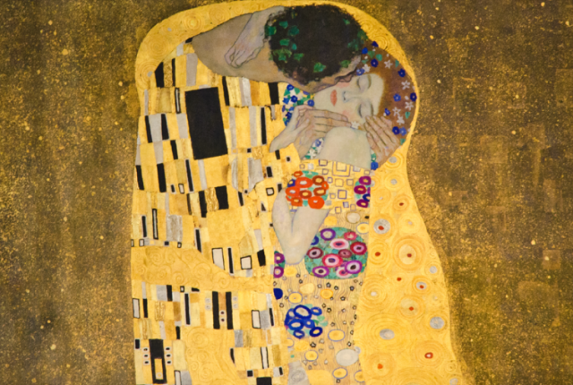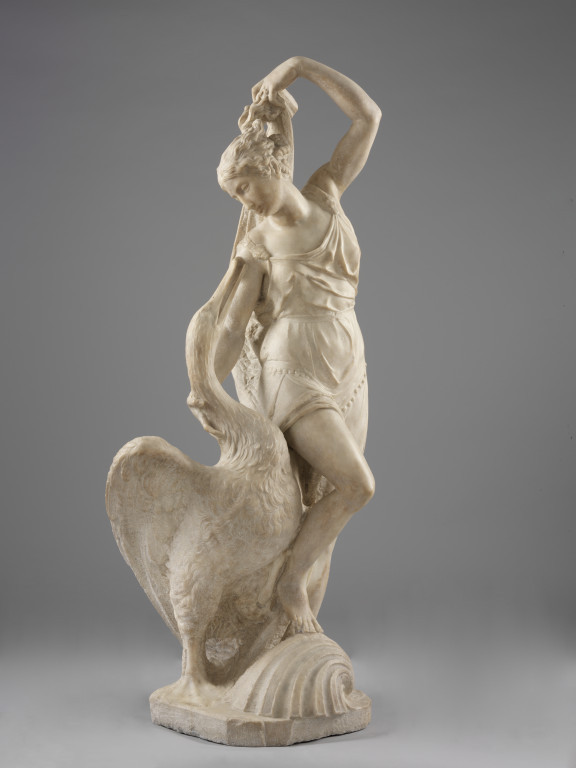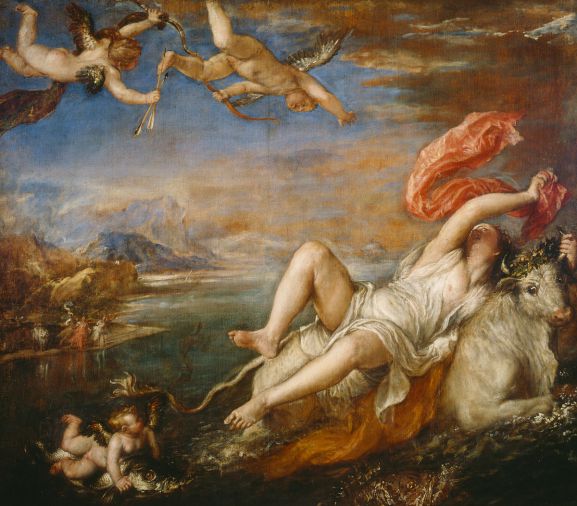For fall break, aka. “Reading Week,” I went to visit my best friend in Montreal. Oops. By 9:45am the next morning we were one of the few people standing outside le Musée des beaux-arts before it even opened. Nice.
Subjects: #Greco-Roman #mythology #literature #sexualassault #Ovid
I enrolled in a Greek & Roman mythology course this term mostly to improve my “cultural capital.” I knew it would make me a better reader/writer if I could recognize and use allusions to ancient Greek myths. Zeus, Odysseus, Sisyphus, Achilles– I mean, they’re everywhere in pop culture and literature and even human anatomy, apparently.
90% of the class was eager first-years. 2% were Classics majors. 100% of us were there for Percy Jackson.As I was walking through the Romanticism exhibit in Montreal, I kept noticing scenes from Greek mythology that we’d learned about in class. It was great– gave me a whole new perspective on the paintings and sculptures. Most of the ones I recognized were depictions of Zeus raping different women in various forms ie:
 This famous painting, “The Kiss,” by Gustav Kilmt shows Zeus raping Danae as a shower of gold.
This famous painting, “The Kiss,” by Gustav Kilmt shows Zeus raping Danae as a shower of gold.
 This Ammanati sculpture shows Zeus raping Leda in the form of a swan.
This Ammanati sculpture shows Zeus raping Leda in the form of a swan.
 Titian’s famous painting shows Zeus raping Europa in the form of a bull.
Titian’s famous painting shows Zeus raping Europa in the form of a bull.
**I didn’t see these exact artworks at the MMFA, just different artistic depictions of the same myths**
The one that stuck out the most to me was Jean-Victor Bertin’s 1826 oil painting, Inside a Forest with Diana and her Nymphs. This painting deals with the myth of the Rape of Callisto, a nymph who is part of Artemis/Diana’s band of virgin huntresses. Zeus sees her sleeping in the grass one day and rapes her in the form of Artemis, attempting to keep his deeds hidden from his wife, Hera.
There are different versions of the myth: in one, Artemis gets mad at Callisto for having lost her virginity and turns her and the child into bears to be hunted by the rest of the maidens. In another, Hera is the one who turns Callisto into a bear upon discovering what occurred.
This is a common thread across these myths: Zeus transforms himself into strange forms in a pathetic attempt to rape other women without Hera noticing, and Hera inevitably finds out and takes out her jealousy on the women. This horrible story brings us to a fantastic word:
Catasterism (n.)= the transformation of a character in Greek myth into a constellation after their deathOnce Callisto and her child die, either Zeus or Artemis transforms them into the constellations Ursa Major and Ursa Minor. I found this myth particularly fascinating because of 3 elements:
BUT
 Bertin’s painting at the MMFA
Bertin’s painting at the MMFA
There is lots of ambiguity about the way these rape scenes are portrayed in Greco-Roman myths. The version of the Callisto myth I read in Book II of Ovid’s “Metamorphoses” portrays Callisto as a sympathetic victim of violence and describes her fighting against Zeus’s attack. It also portrays Hera as jealous and vengeful towards Callisto as “complicit” in Zeus’s act of infidelity. Other times, these violent rapes are described as “seductions.”
With all this in mind, it’s especially interesting to note how the representations of these myths still permeate our culture today. We read about the rape of Danae in drama class, in Sophocles’s “Antigone,” and we hang paintings of it above our marriage beds. What place do these myths still have in our society today?
Advertisements Share this:




